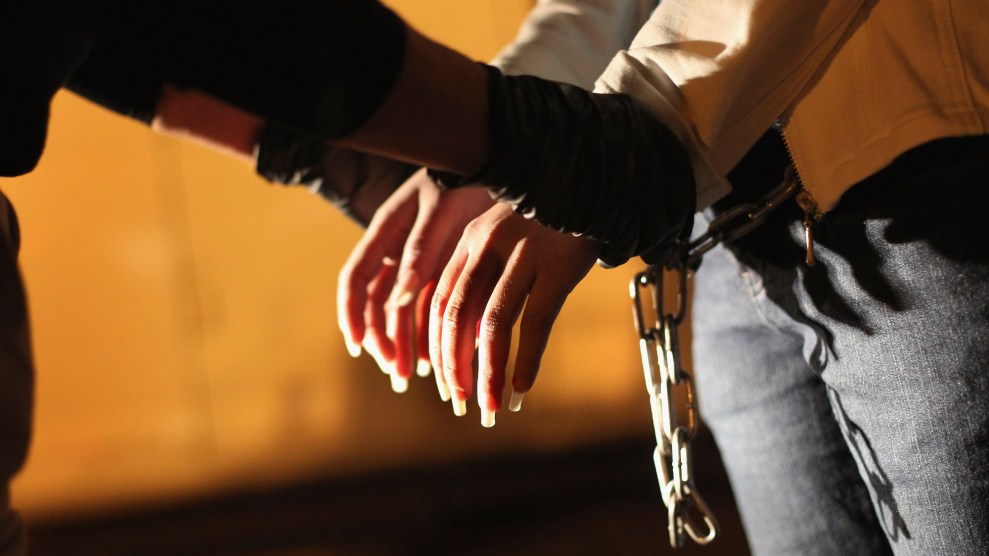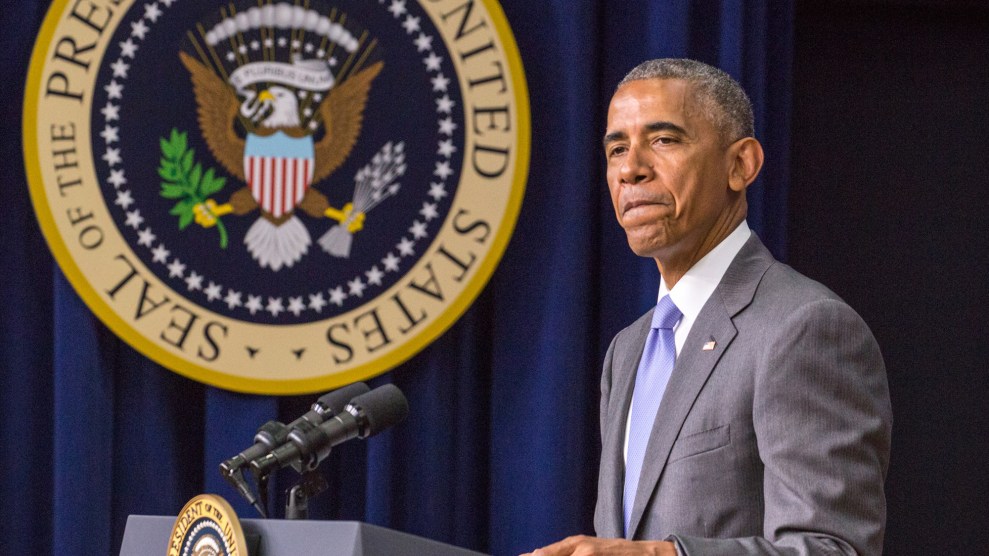
<a href="http://www.istockphoto.com/photo/u-s-immigration-and-customs-officials-deport-undocumented-el-sa-gm107428155-18934420?st=ea55c77">iStock</a>
In late 2014, as part of his executive actions on immigration, President Barack Obama scrapped a controversial immigration enforcement program called Secure Communities. For years, advocates had argued the program, which required the police to share arrestees’ fingerprints with federal immigration officials, trampled immigrants’ civil liberties and instilled a deep fear of law enforcement in immigrant communities.
A year and a half later, civil liberties groups have turned their focus to a pilot program at a county jail in Fresno, California, that allows Immigration Customs and Enforcement (ICE) unprecedented access to inmates and their records at the time they’re locked up. If left unchecked, they say, the program could be almost as bad for immigrants as was Secure Communities.
The pilot program was launched in June 2015 by Fresno County Sheriff Margaret Mims as a way to keep undocumented immigrants who ended up in the Fresno County Jail from slipping through ICE’s fingers—especially those inmates who had committed serious crimes or were repeat offenders. Here’s how it works: When an inmate born outside the country is about to be released, ICE is notified ahead of time so it can review the booking records to see which ones have a criminal history that warrants deportation. On the day the inmate is released, ICE dispatches a transport vehicle and a team of personnel to pick up the inmates and transfer them to one of ICE’s detention centers.
However, in a press announcement last week, the ACLU of Northern California called the program secretive and loosely supervised by the jail. The group says that without proper supervision and transparency, ICE could detain even low-level offenders past their release date. It argues that those who haven’t yet been convicted of a crime could be coerced into signing away their rights during questioning—especially if the forms are in English and they have no time to find a lawyer before the interview.
Here’s more of what the ACLU found, based on a public records request and interviews with 11 inmates:
- Lack of transparency: There are no documents that show how the program was implemented, and there is no written agreement or contract outlining the parameters of the partnership between the jail and ICE.
- Lack of oversight: According to the ACLU, the sheriff’s office does not monitor or evaluate the program to ensure that the civil rights of inmates are not being violated. Asked about how the jail ensures that ICE really is targeting the “worst of the worst,” Mims replied, “I’m accepting what [ICE officials] are telling me, I have not had one person come to me and say they made a mistake. It hasn’t happened yet.”
- Surprise interrogations: So far, 174 inmates have been interviewed by ICE since the program began. According to the ACLU, inmates are often given little to no notice that they will be meeting with ICE, which gives them little time to find a lawyer before the interview takes place. Activists say that without a lawyer, inmates could be coerced into signing a voluntary departure form, agreeing to leave the country within a designated amount of time. (ICE points out that voluntary departures are infrequent, accounting for less than 4 percent of the repatriations it carried out last fiscal year).
- Unclear who’s being deported: Although the ACLU found that 326 inmates were released into ICE custody, they were not able to determine the charges those inmates faced. Immigration advocates worry these could include low-level offenders or inmates who face serious charges but have not yet been convicted. For example, immigration attorney Jessica Smith Bobadilla told Mother Jones that two of her clients were held at Fresno County Jail for low-level, nonviolent offenses and have since been transferred into ICE custody where they remain detained, facing possible deportation. She says one woman was in jail for a probation violation, having been convicted of two nonviolent drug offenses in the past. An ICE spokeswoman declined to comment on the woman’s case, saying she would need more information about the circumstances surrounding it.
Since the program launched in Fresno a year ago, it has spread to three other counties in the state, and immigration experts have said it could provide a blueprint for future immigration enforcement nationwide. That has the ACLU and others concerned.
“ICE has a long track record of abusing its power and trampling people’s rights,” said Angélica Salceda, staff attorney with the ACLU of Northern California, in a press release. The Fresno County Jail program, she said, was “a recipe for disaster.”












